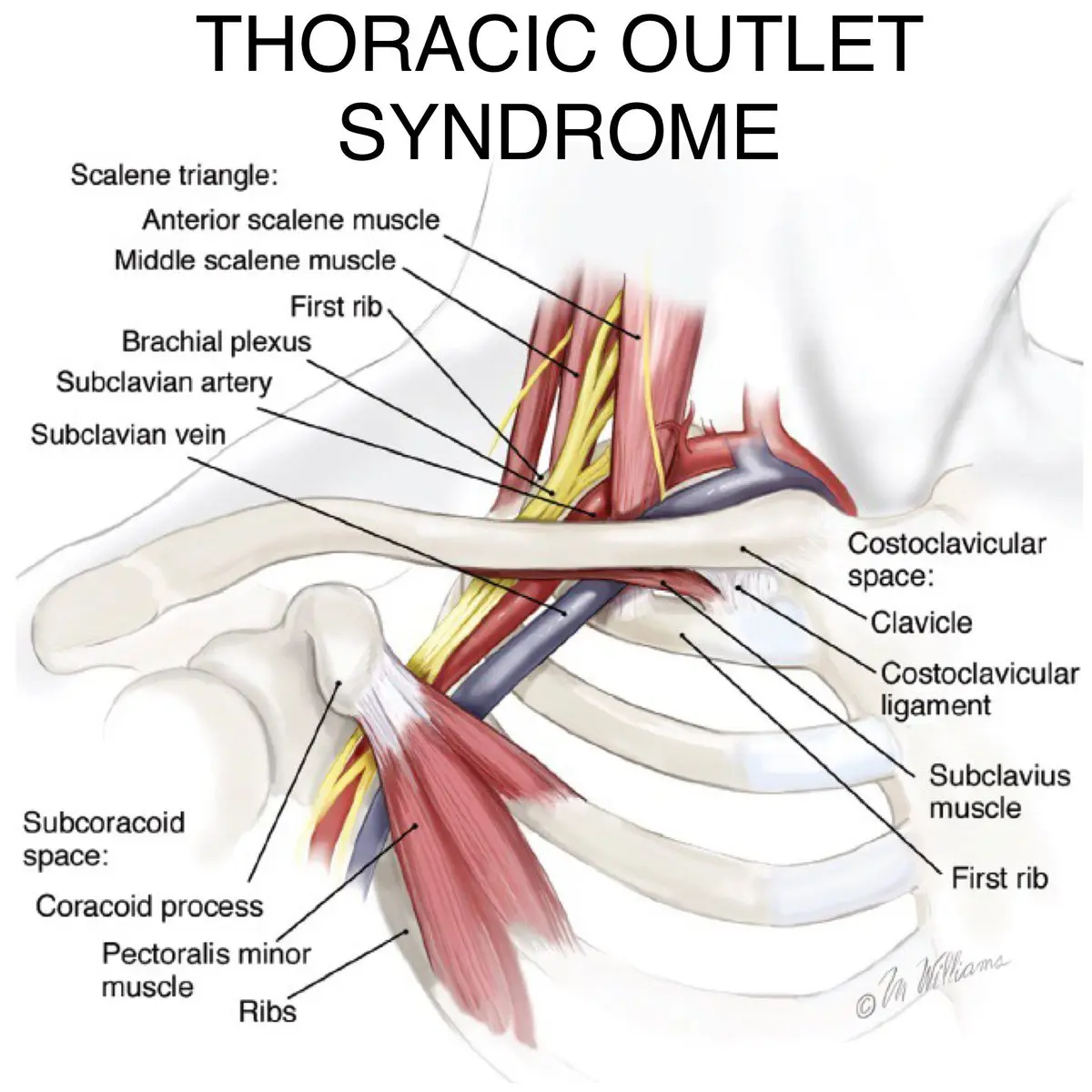Can Thoracic Outlet Syndrome be Cured?
Sometimes
Outcomes depend on the severity and cause of compression; management can alleviate symptoms, but complete resolution may not always be possible

What is Thoracic Outlet Syndrome?
Thoracic outlet syndrome involves compression of nerves or blood vessels between the neck and shoulder. Treatment may include physical therapy and, in some cases, surgery. Regular monitoring is important for assessing symptoms, managing pain, and preventing complications.

Clinical Aspects

Characteristics
Compression of nerves and blood vessels between the neck and shoulder

Symptoms
Pain, tingling, and weakness in the arm; hand and finger numbness

Diagnosis
Clinical evaluation, sometimes imaging

Prognosis
Variable, depends on severity and treatment

Complications
Nerve and vascular issues, potential for complications
Etiology and Treatment

Causes
Compression by muscles or other structures in the thoracic outlet

Treatments
Physical therapy, stretching exercises, medications, in some cases, surgery

Prevention
Physical therapy, stretching exercises, medications, in some cases, surgery
Public Health and Patient Perspectives

Epidemiology
Common, affects nerves and blood vessels in the thoracic outlet

Patient Perspectives
Lifelong management tailored to symptoms
This information aims to provide a general understanding of the subject matter, but individual circumstances can vary significantly. Please remember to consult with healthcare professionals for personalized advice and guidance.
Share: